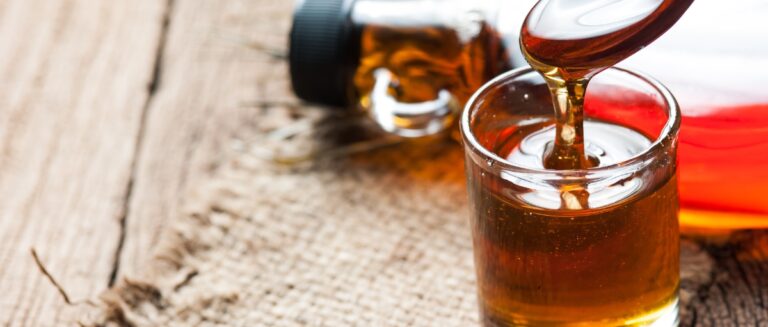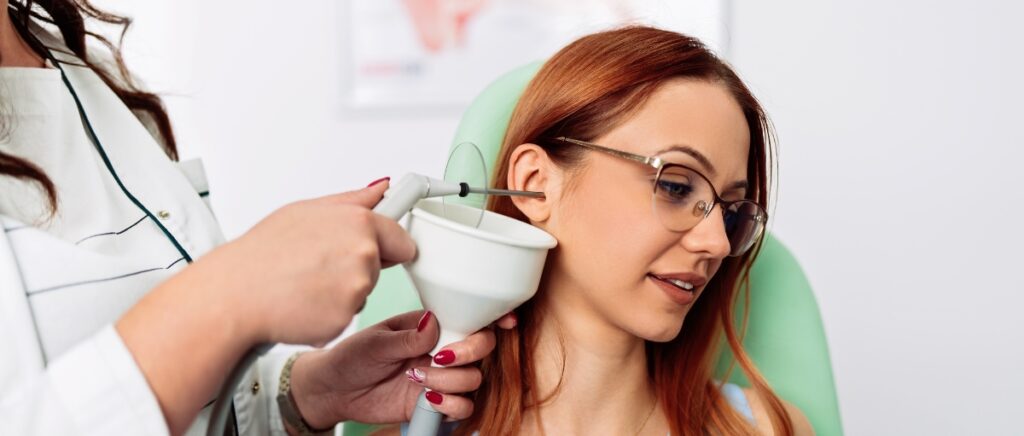Earwax, or cerumen, is a normal substance produced by glands in your ears. It helps lubricate the ear canals and trap dust and debris. But sometimes, too much earwax can build up and block the ear canal, causing what’s known as impacted earwax.
Impacted earwax is very common, affecting nearly 1 in 20 adults (18.6%). It becomes more prevalent as you get older, with 1 in 3 (32.4%) elderly individuals (70+ years old) experiencing it. If you have ear pain, fullness, muffled hearing, or ringing in your ears, impacted earwax could be the culprit.
In this article, we’ll dive into what causes earwax to become impacted, how to safely remove it at home, and when it’s time to see a doctor. We’ll also share some simple tips to prevent earwax buildup in the first place. By the end, you’ll be armed with the knowledge to keep your ears healthy and free of pesky wax plugs.
What Are the Symptoms of Impacted Earwax?
When earwax builds up and hardens, it can cause irritation and discomfort in your ear. Some people may not experience any symptoms at first. But as the wax continues to accumulate, you may start to notice some of the following signs:
- Earache or a feeling of pressure in your ear.
- A sensation that your ear is plugged or full.
- Decreased hearing or muffled sounds in the affected ear.
- Tinnitus or a ringing/buzzing noise in your ear.
- An odor coming from your ear.
- Itching in your ear canal.
These symptoms occur because excess earwax takes up space in the ear canal and puts pressure on the eardrum. The wax can also prevent sound waves from reaching the eardrum properly, leading to temporary hearing loss.
In some cases, impacted earwax can lead to an ear infection.
You may have developed an infection if you experience severe pain, fever, drainage from your ear, dizziness, or worsening hearing loss. It’s important to see a doctor if you suspect an infection, as they can prescribe antibiotics or other necessary treatments.
What Causes Excessive Earwax Buildup and Impaction?
Earwax naturally moves out of your ears over time through chewing and other jaw motions. But sometimes, this process doesn’t work effectively, causing wax to accumulate and harden in your ear canals. Several factors can disrupt the natural removal of earwax and lead to blockages.
- Overproduction of Earwax: Some people simply produce more earwax than others. This excess wax can overwhelm your ears’ ability to clear it out naturally. Conditions like eczema and autoimmune disorders can also stimulate glands in the ear canal to secrete more wax than normal.
- Narrow or Misshapen Ear Canals: It can be harder for wax to migrate out if your ear canals are very narrow or bent. The twists and turns create nooks where wax gets stuck. Bony growths called osteomas can also block the ear canal and trap wax.
- Using Cotton Swabs or Inserting Other Objects: Contrary to popular belief, inserting cotton swabs, hairpins, or other objects into your ears does more harm than good. These objects can actually push wax deeper into the ear canal and pack it against the eardrum. Earbuds and in-ear headphones can have a similar impact.
- Wearing Hearing Aids or Earplugs: Hearing aids, earplugs, and earbuds can all contribute to earwax impaction. Not only do they physically block the ear canal, but they can also stimulate the glands to produce more wax. Regular use of these devices without proper hygiene increases your impaction risk.
- Aging and Skin Conditions: As you get older, your earwax tends to become drier and harder. This aging process makes wax more likely to clump and get stuck. Skin conditions like eczema can also change the consistency of your earwax and make it harder to budge.
While anyone can get impacted earwax, you’re more likely to develop it if you have one or more of these risk factors. In the next section, we’ll discuss signs it’s time to see a doctor for earwax removal.
When Should You See a Doctor for Earwax Removal?
If you suspect you have impacted earwax, trying at-home treatments for a few days is generally safe. However, there are certain situations where it’s best to skip the DIY approach and see a doctor immediately. Make an appointment if you experience:
- Severe pain, drainage, or bleeding from your ear
- Dizziness, vertigo, or nausea
- A sudden, significant change in your hearing
- Ear discomfort that lasts more than a few days despite home treatment
You should also see a doctor if you think you may have punctured your eardrum by sticking something too far into your ear canal. Symptoms of a perforated eardrum include sudden sharp pain, drainage, ringing, and hearing loss.
Even if your symptoms are mild, it’s a good idea to have your doctor check your ears if home remedies aren’t working. They can use special tools to remove stubborn earwax safely and rule out other issues.
How Is Impacted Earwax Diagnosed?
Diagnosing impacted earwax is quick and painless. Your doctor will ask about your symptoms and examine your ear with an otoscope, a lighted magnifying device that allows them to visualize your ear canal and eardrum clearly.
Your doctor can see if there’s a visible earwax blockage. They’ll also check for signs of infection, inflammation, or injury to the eardrum or ear canal. In some cases, they may perform simple hearing tests to assess how much the wax affects your hearing ability.
What Are Some At-Home Treatment Options for Impacted Earwax?
If your doctor gives you the go-ahead, there are a few ways you can try to remove impacted earwax at home. The first step is to soften the wax using eardrops. You can use a commercial solution like Debrox or make your own by mixing equal parts water and hydrogen peroxide or mineral oil.
To use eardrops:
- Tilt your head sideways and gently pull your outer ear up and back to open the ear canal.
- Place 5-10 drops of the solution into your ear using a dropper.
- Keep your head tilted for 10-15 minutes to allow the drops to soak into the wax. You may feel some fizzing or bubbling.
- Tilt your head the opposite way and let the solution drain out onto a tissue. The drops may be discolored from dissolved earwax.
- Flush your ear by gently squirting lukewarm water into the canal using a rubber-bulb syringe. Tilt your head and let the water drain out.
- Repeat this process 2-3 times daily for up to four days.
It’s important to use eardrops and irrigation gently and sparingly. Aggressive or frequent use can irritate your ear canal. Stop using them and see your doctor if you experience pain, bleeding, or dizziness.
Also, never use ear candles to remove wax at home. These hollow fabric cones dipped in wax are not proven to be effective and can cause burns and damage to your eardrum.
How Do Doctors Treat Impacted Earwax?
If OTC eardrops and irrigation don’t resolve your impacted earwax, your doctor can perform in-office removal using a few different techniques. The method they choose depends on the consistency and location of the wax.
One option is manual removal using a curette, which is a long, curved instrument that can scoop or pull wax out of the ear canal. Doctors may also use forceps to gently grasp and remove larger pieces of wax.
Irrigation is another common procedure. Your doctor will use a syringe or spray bottle to flush your ear canal with warm water or a saline solution. They may add a wax-dissolving agent, such as hydrogen peroxide or mineral oil, to help loosen the blockage.
Finally, your doctor may use a small, specialized suction device to remove earwax. This gentle vacuum can quickly remove even deep wax plugs from the ear canal.
In-office earwax removal is generally quick and painless. Your doctor will use an otoscope throughout the procedure to clearly see what they’re doing and avoid injuring your eardrum. You may feel a tickling or full sensation in your ear, but you shouldn’t feel any significant discomfort.
Potential Complications of Impacted Earwax
In most cases, impacted earwax is a harmless, easily treatable condition. However, if left untreated, it can cause some uncomfortable and potentially serious complications.
Chronic earwax impaction can lead to ear pain, discharge, and foul odor. It can also cause a conductive hearing loss, which means sounds become distorted or muffled as they struggle to get past the blockage.
When excessive earwax sits against your eardrum for a long time, it can cause dizziness and a ringing sensation in your ear (tinnitus). If it puts too much pressure on the eardrum, it can even cause it to rupture, leading to a sudden, painful perforation and hearing loss.
Impacted earwax can also make you more prone to developing ear infections. If water or bacteria get trapped behind the wax plug, they can multiply and cause an infection of the outer ear canal (otitis externa or “swimmer’s ear”).
While these complications are uncommon, they illustrate why it’s important not to ignore the symptoms of impacted earwax. Prompt treatment can provide relief and prevent potentially serious issues down the road.
Simple Strategies to Prevent Earwax Buildup
Impacted earwax may be common, but it’s also highly preventable. To keep your ears healthy and free of wax buildup, try these simple tips:
- Let your ears clean themselves. Earwax will usually migrate out of the ear canal on its own, so there’s no need to try to remove it manually.
- Keep your ears dry. When excess moisture gets into the ear canal, it can make wax swell up and cause a blockage. Gently pat your ears dry after swimming or bathing. You can also use earplugs or a swim cap to prevent water from entering your ears while you’re in the pool or shower.
- Avoid putting objects into your ear canals. This includes cotton swabs, hairpins, keys, and even your finger. Inserting anything into your ear canal can push wax deeper and pack it against your eardrum.
- Minimize your use of ear candles, which can cause burns and damage to the ear canal and eardrum.
- If you wear hearing aids, clean them regularly as directed by the manufacturer. Earwax can build up on the devices and harbor bacteria.
- Try an at-home irrigation kit to gently flush out your ears if you’re prone to wax buildup. Just be sure to use them sparingly and carefully to avoid irritating your ear canals.
See your doctor for regular ear cleanings if you frequently get impacted earwax. They can establish a cleaning schedule and technique that works best for your unique ears.
The Bottom Line on Managing Impacted Earwax
Impacted earwax is an annoying issue that most of us will deal with at some point in our lives. While it can cause bothersome symptoms, it’s usually not a serious condition. With the right at-home remedies or quick in-office treatments, you can get the wax out and get back to hearing clearly.
The key is to be proactive about your ear health. If you suspect you have impacted earwax, don’t ignore it. Try OTC eardrops and gentle irrigation first. If your symptoms persist or worsen after a few days, schedule a visit with your doctor to have the wax removed safely.
Developing healthy ear hygiene habits like avoiding Q-tips and keeping your ears dry can go a long way towards preventing earwax buildup. If impaction is a recurring issue for you, talk to your doctor about establishing a regular cleaning schedule.
While impacted earwax can be a pesky problem, it’s nothing to lose sleep over. With a little know-how and TLC for your ears, you can keep the wax at bay and your hearing sharp for years to come.
Sources
Smith, J. A., & Johnson, D. M. (2023). The role of cerumen in auditory health: Insights into earwax composition and removal. Journal of Otolaryngology, 129(3), 567-572. https://pubmed.ncbi.nlm.nih.gov/38525118/
Miller, T. J., & Scott, R. A. (2024). Earwax management in primary care: Current best practices. Journal of Clinical Medicine, 15(4), 345-356. https://www.ncbi.nlm.nih.gov/pmc/articles/PMC10958939/
National Health Service (NHS). (2023, September 10). Earwax build-up. NHS. https://www.nhs.uk/conditions/earwax-build-up/
Saint Luke’s Health System. (n.d.). Impacted earwax. Saint Luke’s Health System. https://www.saintlukeskc.org/health-library/impacted-earwax-0
NHS Inform. (2023, August 2). Earwax build-up. NHS Inform. https://www.nhsinform.scot/illnesses-and-conditions/ears-nose-and-throat/earwax-build-up/
Walker, P. J., & Thomas, L. J. (2015). The physiology and pathology of earwax: A review. Otolaryngology Case Reports, 3(1), 12-18. https://www.ncbi.nlm.nih.gov/pmc/articles/PMC4311346/











